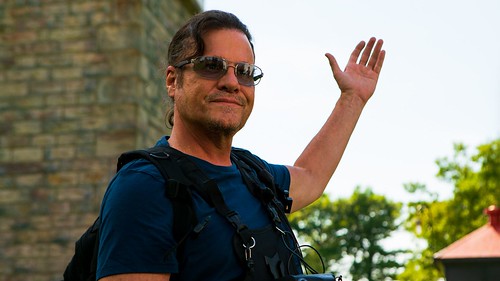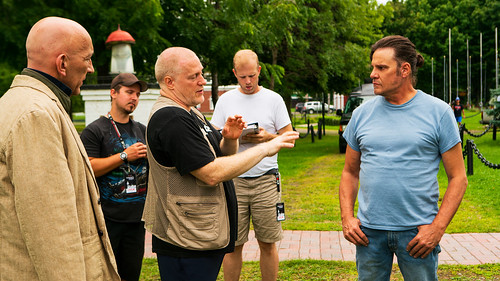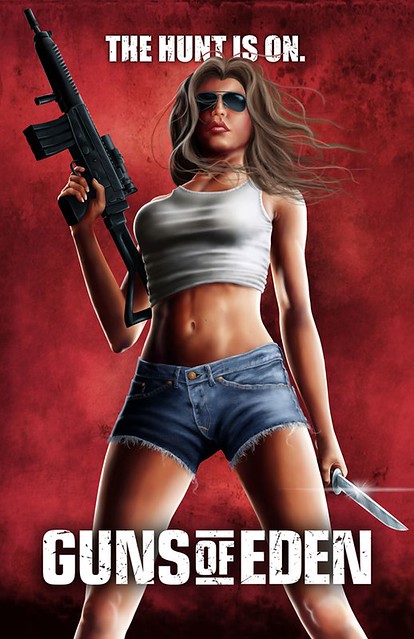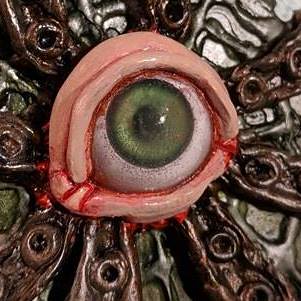Movies & TV / Columns
Gregory Lamberson On His New Film Widow’s Point Being a ‘Non-Traditional’ Ghost Story
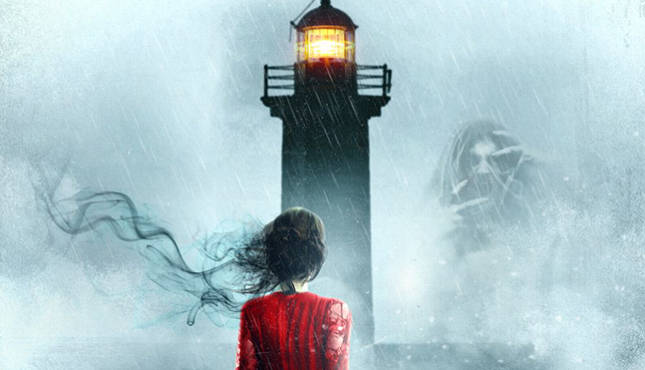
The 411 Interview: Gregory Lamberson
Gregory Lamberson is a director, writer, and producer who has been making movies since the late 1980’s, starting with the classic horror flick Slime City. Since then, Lamberson has directed such movies as Naked Fear, Slime City Massacre, Dry Bones (he co-directed this with Michael O’Hear), the absolutely fantastic horror comedy Killer Rack, and the best movie of 2018, Johnny Gruesome. Lamberson is also an author, responsible for the books Black Creek, Carnage Road, Johnny Gruesome, The Frenzy Wolves, and The Jake Helman Files series (Lamberson also co-directs with Chris Scioli the Buffalo Dreams Fantastic Film Festival). Lamberson’s latest movie is the supernatural ghost horror flick Widow’s Point, which is now available on DVD, digital, and Video On Demand platforms. In this interview, Lamberson talks with this writer about making Widow’s Point, working with star Craig Sheffer, and more.
**
Bryan Kristopowitz: Why did you want Widow’s Point to be your next movie as a director?
Gregory Lamberson: I was actually developing another project – three, come to think of it – when Richard Chizmar sent me an advance copy of the book, which he co-wrote with his son Billy. Rich and I had discussed doing something together, and when I read the book I liked it and saw it as a way to do some interesting things. The timing was right: I didn’t know how I was going to raise the budget for this werewolf movie I’m dying to make, and the logistics of a haunted lighthouse movie seemed easier to manage.
BK: Was it always your intention to make a sort of “non-traditional” ghost movie with Widow’s Point? The movie doesn’t play like a “modern” ghost horror movie.
GL: Yes. It’s a feature that flirts with being an anthology film, but it’s not an anthology. A lot of it takes place in the daytime, the story doesn’t rely on jump scares, and it has a real Lovecraft angle. It’s unique. Some reviewers have said, “The film has a creepy atmosphere and avoids clichés,” and others have lamented, “Where the hell are the clichés?” It’s a smart movie even if some of the basement boys disagree.
BK: The version of Widow’s Point released on DVD is different than the version screened at its world premiere in August 2019. What was changed and why was it changed?
GL: Oh, man. I think it’s like a minute shorter, but I really don’t remember. At some point I cut a few scenes, but I don’t remember when that was. Most of my films run around 87 mins, and I wanted this one to run that length, too. It was important to me to keep it moving. The deleted scenes are extras on the DVD, by the way.
BK: Widow’s Point is based on a book by authors Richard Chizmar and Billy Chizmar. How did you adapt their story into a screenplay?
GL: The first thing I did was drop the book’s “found footage” device. That’s unique for a book, but we’ve seen it a hundred times in movies. I still maintained an element of that. The second thing I did was choose which flashbacks explaining the lighthouse’s haunted history to keep, because if I’d kept them all it would have been an anthology film, and I didn’t want that. After setting the structure – because the book does not have a traditional three-act structure – I came up with a definite ending that brought the different stories together. When writing it, I chose key sentences or passages from the novella and used them as dialogue, to be as true to the spirit of the novella as possible. I wanted to know that when Rich and Billy, and the book’s readers, heard those lines they would appreciate my fidelity to the source material even while reconfiguring it.
BK: Most ghost story horror movies tend to be flush with blues and other dark colors, while Widow’s Point is chock full of light/bright colors. How did you come up with the look of Widow’s Point?
GL: I wanted a natural color palette for the film during the daytime scenes – it’s kind of hard to do otherwise at a lake in July – but we used blues for the night scenes, and a lot of teals for other scenes because teal was the primary color used for the hardcover of the book.
BK: How difficult was it to secure the various locations used for Widow’s Point?
GL: It was really easy until it became really hard, and then it became really easy again. Honestly, it’s always a pain in the ass, but 10 days from shooting I still didn’t have my lighthouse locked. As a side note, lawyers can be scumbags.
BK: The Dunkirk Lighthouse is a fantastic place and works brilliantly with the story. Would you have been able to make Widow’s Point without it? What were your options in the event that you couldn’t get the Dunkirk Lighthouse?
GL: I looked at a lot of lighthouses in the run-up to the shoot. One was only accessible by boat, which wasn’t practical. Another had rotten steps in the tower. Another was in a busy park. Another was off a busy highway. The only other one that I liked would only let us shoot there for three days, and I needed it for six. So I would have been royally screwed without the Dunkirk Lighthouse. I love the people who work there, and now my family stops in to see Dave Briska, who runs it, whenever we’re in town (I grew up in Dunkirk-Fredonia, and visit a couple of times a year).
BK: How did you cast Widow’s Point?
GL: When I read the book, I knew within pages that I wanted Michael Thurber, who lives in Rhode Island, to play the lighthouse keeper. My daughter Kaelin was an obvious choice for the little girl, and John Renna for the big brute who kills her. I knew who the poker players would be. I wrote the role of Andre, the techie, for my friend Byron Brown, who was one of the leads in Johnny Gruesome. I told him, “Don’t cut your dreads” and he did, and dyed his hair blonde for another film. It totally destroyed my picture of the character. Rosa was meant to be Puerto Rican, but we have very few Hispanic actresses in Buffalo. I auditioned KateLynn Newberry for that part even though she’s Caucasian, and she gave the best audition. Then I wanted someone older to play opposite KateLynn, so Byron was out and Dominic Luongo was in. Does that answer your question? Oh, Craig Sheffer…we’re friends, I called him up, he read the script, and agreed to play the role that night. And he suggested his daughter Willow for one of the ghosts, so we were pretty much set.
BK: Craig Sheffer’s performance is simply amazing. Describe your working relationship with him.
GL: We’re friends, so there’s trust. And he brought so much to every scene he did in the beginning that I just let him do his thing. On a play, or on a larger film, you have a rehearsal period, and you work out nuances during that time. But on small films the actors are expected to show up with their characters fully formed and deliver them right off the bat. When you have someone like Craig, or Debbie Rochon, or Lynn Lowery, who are all supremely talented, your job as director is to give them room to create.
BK: What was it like directing your daughter Kaelin in her biggest part yet in one of your movies?
GL: It was great because she was great. She knew her lines, she was committed, and she busted her little fanny. That’s a real performance that kid delivered, and I’m so proud of her.
BK: How did the incredibly unnerving soundtrack come together for Widow’s Point? Describe your working relationship with Armand John Petri and Joe Rozler.
GL: Armand and Joe did the scores for Killer Rack and Johnny Gruesome before they did Widow’s Point, so again, there’s a trust factor. I get together with Armand and we watch the film and discuss what I want. Armand takes notes, but he doesn’t read them. Then he and Joe get together and try a few things. Sometimes it’s freewheeling. Once I went out to Armand’s studio because Mary Ramsey from 10,000 Maniacs was performing her vocals for the film and the viola you hear, and Armand said to Joe about one piece, “Oh, that piano piece you did the other day? I made it backwards,” and Joe said, ‘Great!” So it’s experimental. And Armand will bring in other musicians with crazy instruments, and they do an actual orchestral score, not a synthesizer score. It’s very lush for a low budget film.
BK: You’ve been making movies since the late 1980’s, starting with the classic Slime City. How has the low budget/indie movie business changed since you started?
GL: It sucked then and it sucks worse now. One difference is that back then, there was a real excitement and support for low budget indie movies. Over the last 15 or 20 years, the big studios have taken over making B movies, and they make them really well on budgets ranging from $3 million to $20 million. Today’s horror press doesn’t have the same kind of appreciation for B movies that the horror press in the 80s did, because there’s so much big budget horror to choose from. Somehow “low budget” has become a derogatory term.
BK: Who are your moviemaking heroes?
GL: Romero, Jack Arnold, Dan Curtis, Abel Ferarra, John Llewellyn Moxey (look him up).
BK: Any upcoming projects you can reveal to the world?
GL: The next film is Guns of Eden, which is sort of Deliverance meets First Blood, with a female hero. I’m figuring out now how to get it off the ground in this Covid world. It isn’t easy, but it never is. People have no idea how much work goes into making an indie feature, at least if the filmmaker gives a shit about what he’s doing, and raising money is tough. But this is the one I’m doing.
BK: What do you hope audiences get out of Widow’s Point?
GL: I make fun films with some subtext. Widow’s Point is more of a mood piece than I usually do, and it’s definitely more of a psychological thriller. I saw it in a theater last week, at a private party, and thought, “This is pretty good – it’s well directed and well-acted, and I’ve never seen anything like it before.” Hopefully people will recognize its originality, but I still have to get up in the morning whether they do or not.
BK: If a Widow’s Point sequel ever happens what sort of sequel would you like to do? Would you like to do a direct sequel or some other kind of sequel?
GL: Before we started shooting, I did an outline for a sequel and sent it to Rich. He never responded, so I haven’t given it any additional thought. I know he and Billy have discussed doing prequel and sequel novels. My thought was we still have stories from the book we haven’t used, and I would bring back the characters I created for the movie for the sequel. I had a huge ending in mind. I would only do it if we went the Evil Dead/El Mariachi route – do a sequel for ten times as much money, so we could have a longer shooting schedule and do some special effects that the internet trolls wouldn’t bitch about.
BK: Is the term “B-movie” a bad thing or a good thing?
GL: It’s never bothered me, I love B movies. I’d rather watch a good indie film than Hollywood bullshit any day. I run a film festival and love supporting creative films made on a shoestring.
BK: What the heck happens to Thomas Livingston’s sweet van?
GL: Ha! In an early draft of the script I had Rosa tell Marshall, the agent she works for, that they should get Thomas’s ex-wife to take it. But I’m pretty sure it’s been sighted in LA…
**
A very special thanks to Gregory Lamberson for agreeing to participate in this interview and to Clint Morris for setting it up.
Buy the Widow’s Point DVD at Deep Discount.com, Amazon, and Walmart (the DVD is also available in actual Walmart stores)!Widow’s Point is also available on various digital and Video On Demand platforms!
Buy the Widow’s Point book here!
Check out the Widow’s Point Facebook page here!
Check out Gregory Lamberson’s Facebook page here!
Check out my review of Widow’s Point here and my Widow’s Point set visit here!
Check out the Guns of Eden Facebook page here!
Check out the Buffalo Dreams Fantastic Film Festival Facebook page here!
Gregory Lamberson profile image from Gregory Lamberson Facebook page. Widow’s Point poster image, Craig Sheffer and Michael Thurber image, Craig Sheffer/KateLynn E. Newberry/Dominic Luongo image, and Craig Sheffer waving image courtesy of October Coast. Gregory Lamberson/Craig Sheffer/Michael Thurber image and “eye” image from Widow’s Point Facebook page. Guns of Eden poster image from Guns of Eden Facebook page. Lighthouse image from Bryan Kristopowitz.







